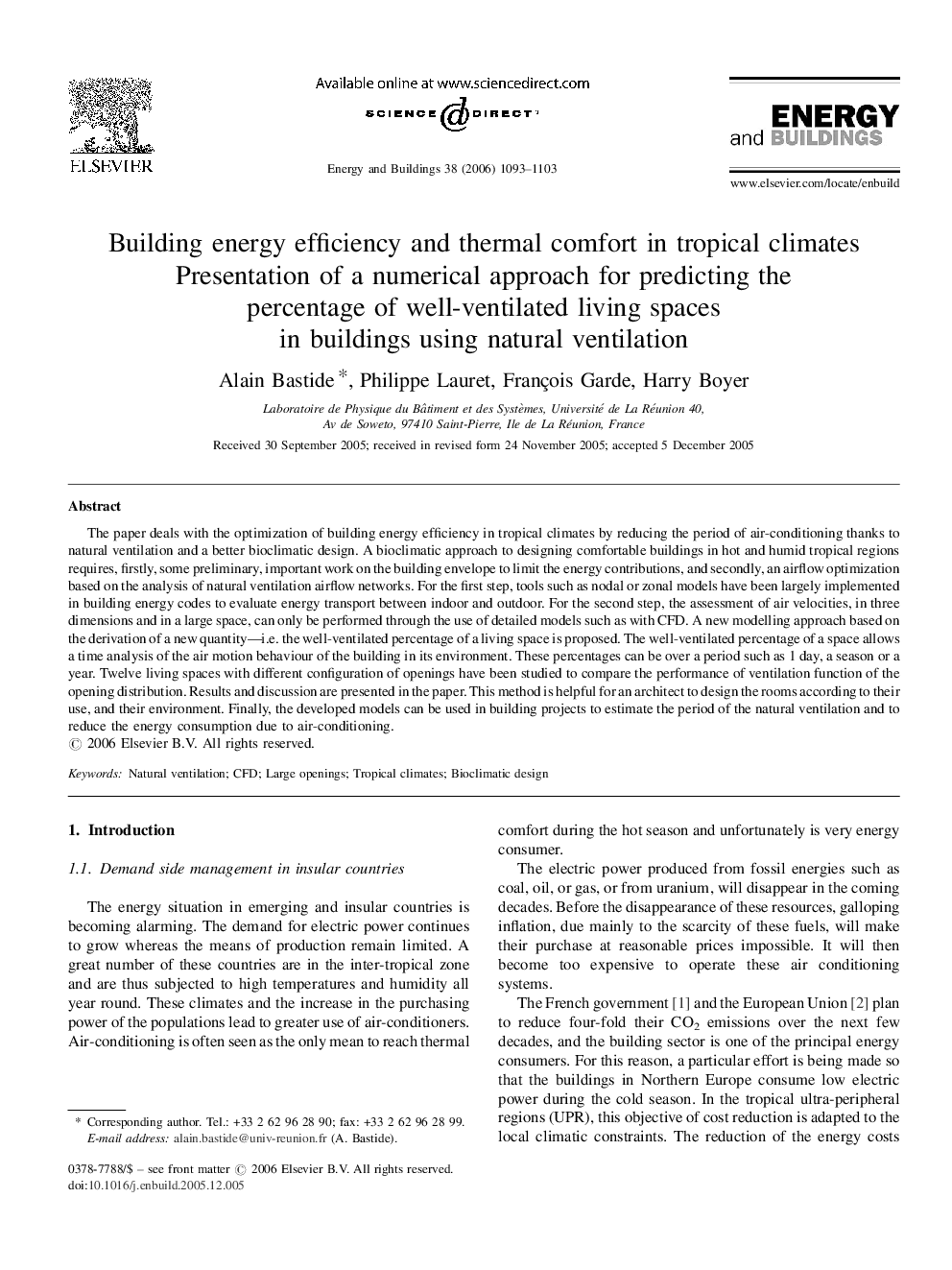| Article ID | Journal | Published Year | Pages | File Type |
|---|---|---|---|---|
| 265394 | Energy and Buildings | 2006 | 11 Pages |
The paper deals with the optimization of building energy efficiency in tropical climates by reducing the period of air-conditioning thanks to natural ventilation and a better bioclimatic design. A bioclimatic approach to designing comfortable buildings in hot and humid tropical regions requires, firstly, some preliminary, important work on the building envelope to limit the energy contributions, and secondly, an airflow optimization based on the analysis of natural ventilation airflow networks. For the first step, tools such as nodal or zonal models have been largely implemented in building energy codes to evaluate energy transport between indoor and outdoor. For the second step, the assessment of air velocities, in three dimensions and in a large space, can only be performed through the use of detailed models such as with CFD. A new modelling approach based on the derivation of a new quantity—i.e. the well-ventilated percentage of a living space is proposed. The well-ventilated percentage of a space allows a time analysis of the air motion behaviour of the building in its environment. These percentages can be over a period such as 1 day, a season or a year. Twelve living spaces with different configuration of openings have been studied to compare the performance of ventilation function of the opening distribution. Results and discussion are presented in the paper. This method is helpful for an architect to design the rooms according to their use, and their environment. Finally, the developed models can be used in building projects to estimate the period of the natural ventilation and to reduce the energy consumption due to air-conditioning.
